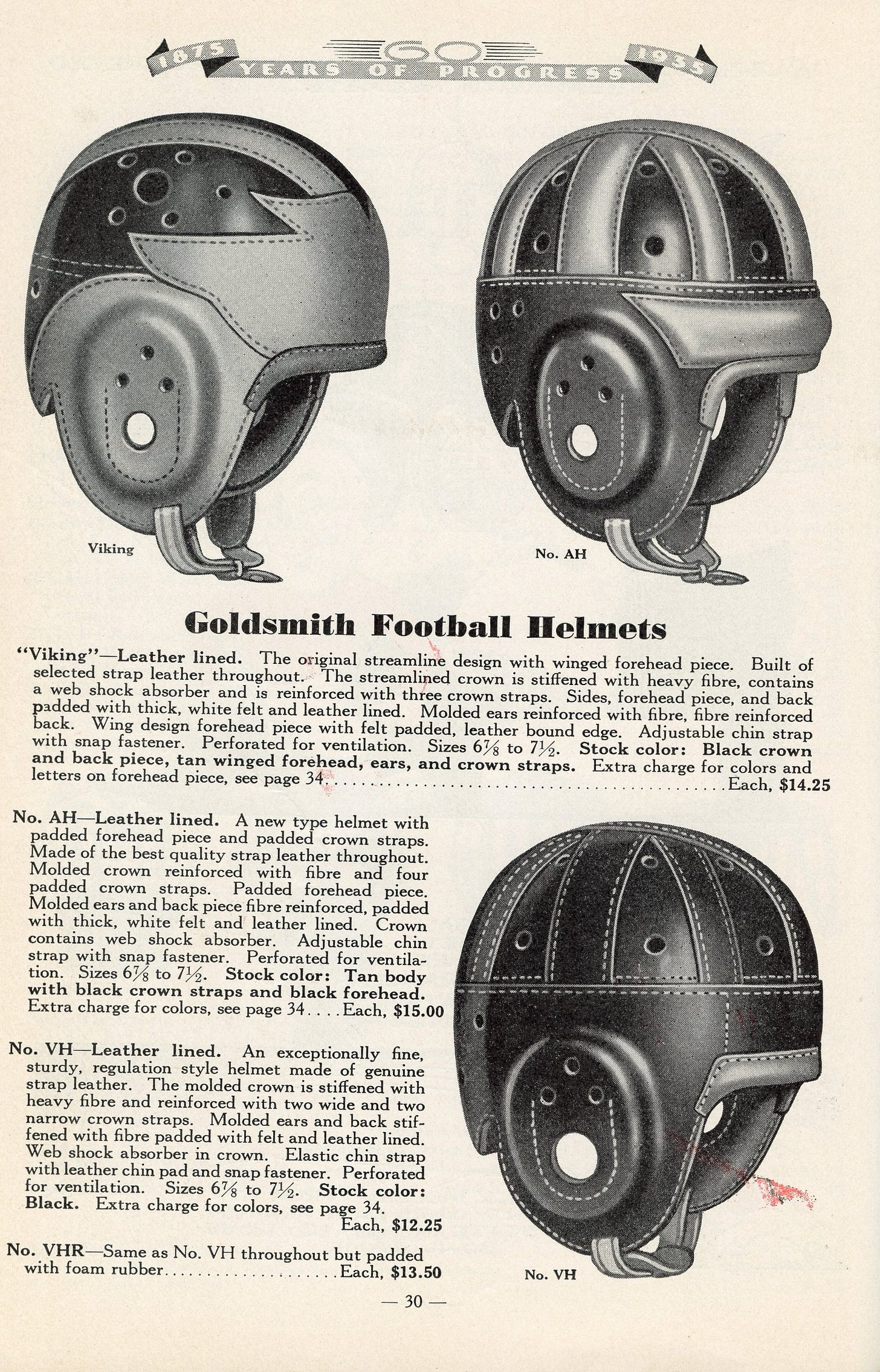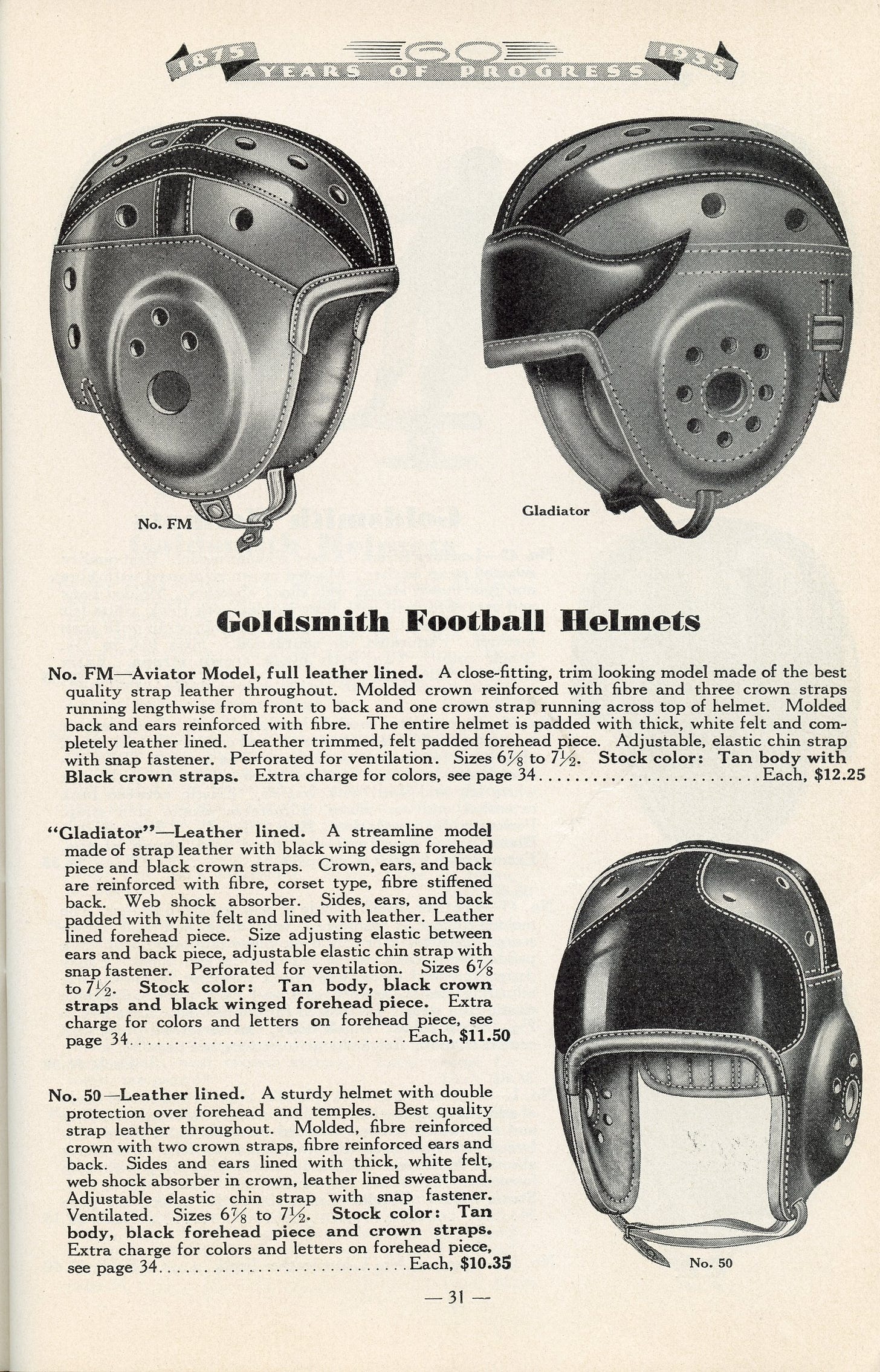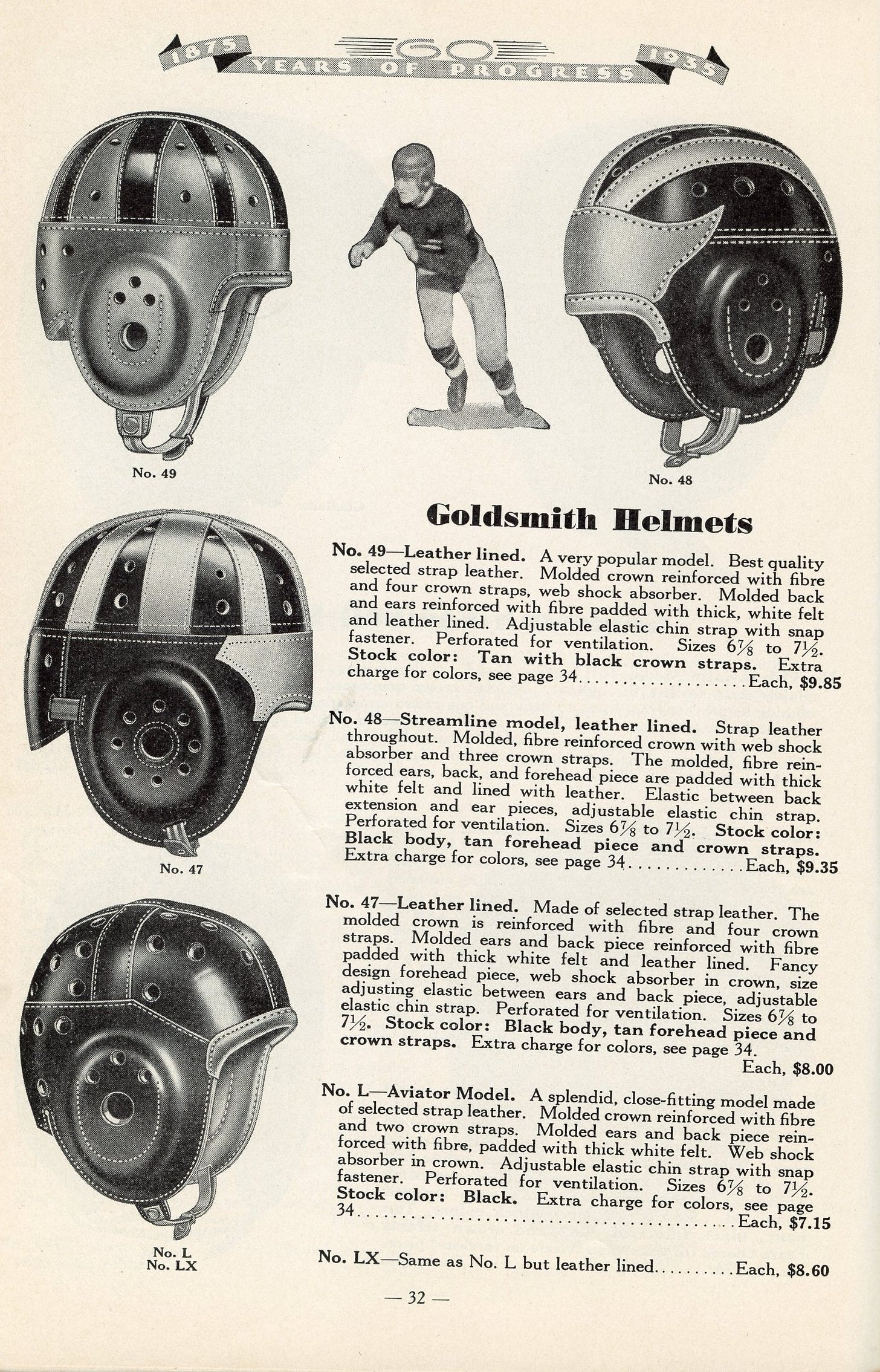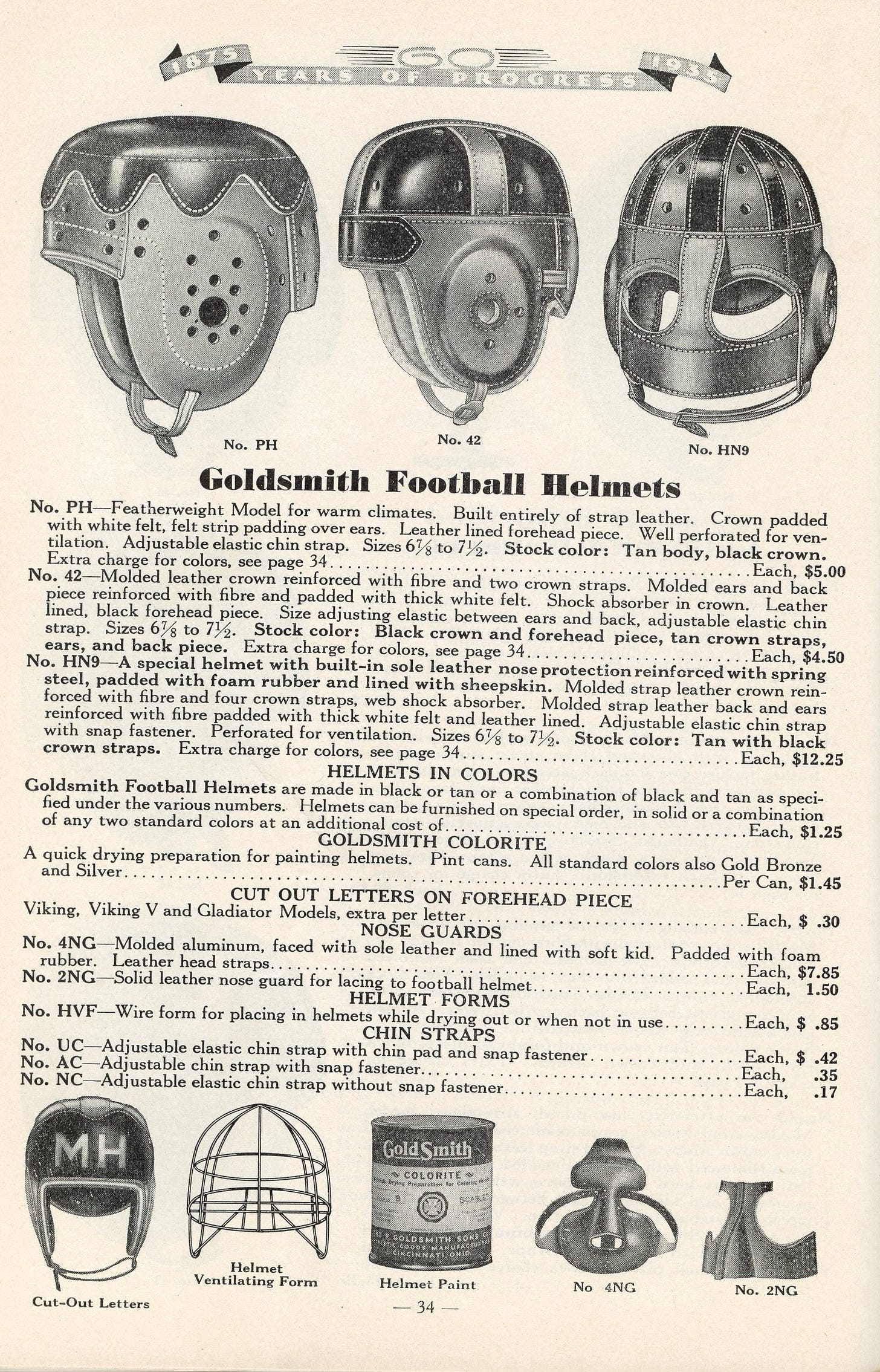Today's Tidbit... 1935 GoldSmith Sports Equipment Helmets
This is the sixth of seven articles in a series covering the 1935-36 Fall & Winter GoldSmith Athletic Equipment catalog. Preceding each section of the catalog is a one-page cartoon about the history of that type of equipment, in today's case, football helmets.
Click the appropriate link for other stories in the series:
Consulting Staff | Footballs | Shoes | Pants | Jerseys | Helmets | Shoulder Pads | Miscellaneous
In true football tradition, GoldSmith pulled on the history of military helmet use to protect participants' noggins. Football headgear resembling those used in wrestling arrived in the early 1890s, but true helmets that offered mechanical protection waited until the late 1890s. And while it had nothing to do with wearing a helmet, they also point out that Brick Muller threw a 70-yard touchdown pass in the 1920 Rose Bowl. Actually, Muller’s long pass came in the 1921 Rose Bowl and was credited as a 40-yard TD pass, though Muller had dropped back 15 yards behind the line of scrimmage before throwing it to the goal line.
As I wrote in an earlier story about variations in winged helmet designs, there were many variations on the winged helmet theme. For example, the Viking model had a double-wing pattern, the AH had a pronounced forehead pad and padded straps on the crown, and VH with crown straps and less external padding.
GoldSmith’s FM helmet had a unique pattern of straps, with three radiating from the forehead over the crown and another crossing between the ears. The Gladiator has the classic winged look, while the Model 50 is a variation on the trefoil pattern that extended over the temples and up the crown on various 1930s helmet brands.
Next came a mix of moderately priced helmets with various designs that were 70 to 50 percent of the price of the top-of-the-line Viking helmet.
Models priced as low as 37 percent of the Viking helmet allowed the budget-conscious to protect players' heads. However, without the comparative testing available today, it isn't easy to understand how the cost-quality tradeoff occurred.
Many of my favorite pages in old sporting goods catalogs list accessory products. The next page offered two dirt-cheap helmets. They pitched the Model PH as lightweight in a great example of turning a negative into a positive. The HN9 model provided an integrated executioner's mask for those needing to protect their noses, while separate nose guards could also be had.
Other options included letter cutouts from the forehead pads, which were among the earliest logos on football helmets. GoldSmith paint was also on offer, along with my favorite helmet accessory, the drying rack, which came in handy after wearing a leather helmet during a wet game or practice.
Every football helmet offered in 1935 was leather and would remain so until 1940 when Northwestern wore Riddell's plastic helmet for the first time. Wartime needs kept plastic helmets in short supply, but they became popular post-war and entirely replaced leather helmets by the early 1960s.
Football Archaeology is reader-supported. Click here to buy one of my books or otherwise support the site.








Very cool write up. Interesting with the letter cut outs. Are you aware of any teams that used the leather monogram logos in those early years?